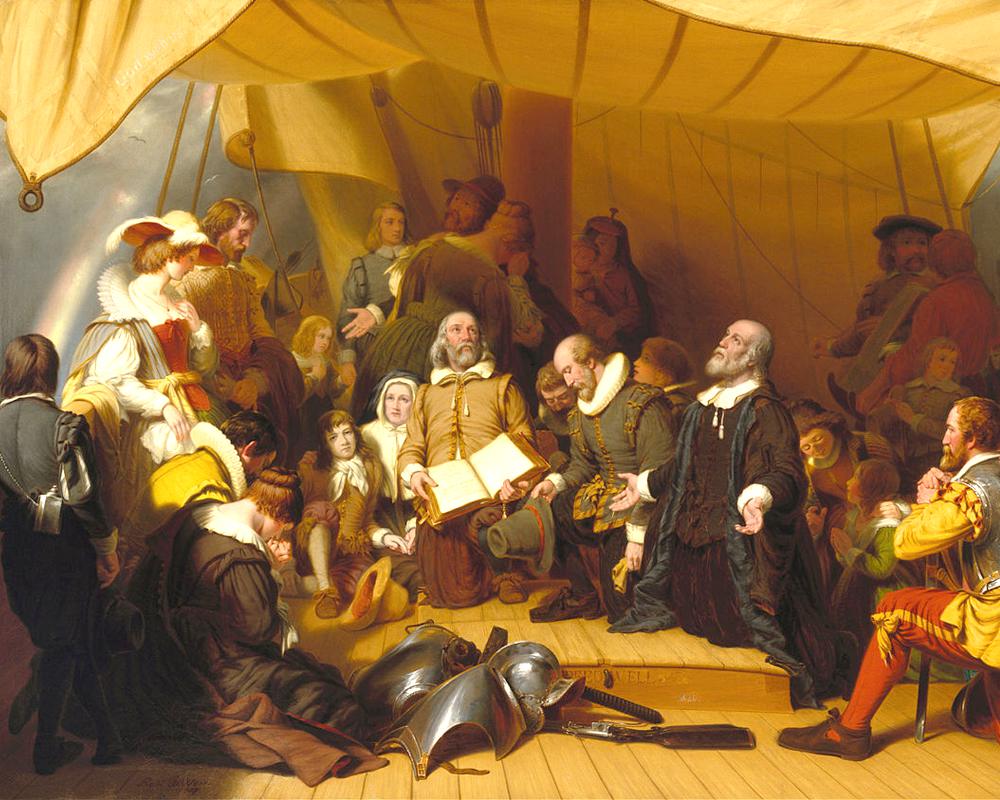

The Puritans had different religious beliefs from the Pilgrims, and different business interests. In 1630, the Puritans arrived in Boston, an hour’s drive north of the Pilgrim’s Plymouth Colony. Even worse, they had no idea either that they were uncivilized savages or that they were worshiping the wrong god, in the wrong ways. Those people didn’t realize that this was a “New World.” For them it had simply been “the world” they and their ancestors had lived in since before the Pilgrims’ ancestors had lived in England. When the Pilgrims arrived, there were people already here.

They believed that only those who agreed with them should be allowed to believe at all.

They had no interest in the idea of religious freedom of belief. They wanted to be the punishers, rather than the punishees. They left the “Old World” because back there, their religious beliefs were not accepted as the only true beliefs, and they were punished for their beliefs. And it was their goal to inflict that belief on the “New World” and anyone they had power over, over here. The Pilgrims believed that there was only one true religion. It was common to imprison people who expressed the wrong beliefs, and burning witches and other non-conformers was still seen as a viable punishment for heresy, or dissent, or poverty. The Pilgrims came to the “New World” from a society that had strict laws regulating religious belief. Let us acknowledge that which has always been true, but has been too often denied: The Pilgrims did not come here for religious liberty. With all the frenzy about the pandemic, and about Covid-45, the infection that just won’t leave, more than a few important news and historical stories have gotten too little attention.Īs a religious bigot was just appointed to the Supreme Court, it might be worth remembering that November, 1620, four hundred years ago, the Pilgrims arrived in what is now Massachusetts.


 0 kommentar(er)
0 kommentar(er)
